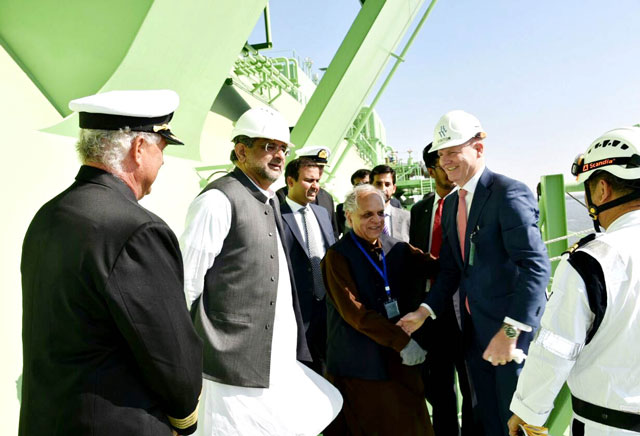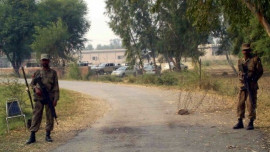
Addressing the inaugural ceremony, the prime minister declared that Pakistan would have surplus gas after the second terminal started processing gas on November 24. However, he said the surplus would be short-lived as gas demand from industries and other sectors was rising.
He recalled that the government faced several challenges when it came to power in mid-2013, but the national economy jumped 5.3% in fourth year of the tenure (fiscal year 2016-17) and it was expected to rise 6% in the current year.
He emphasised that electricity shortages had been largely overcome with the import of LNG - the cheapest energy source at present, adding the government was currently working on several power projects.
He reaffirmed that the government was committed to resolving the energy crisis and it had been able to reduce power outages.
The government had worked on different options to bridge the energy shortfall, he said while pointing to a 1,360-megawatt coal-power project, which was nearing completion. Another coal-fired power project has already become operational.
Pakistan is importing 600 million cubic feet of LNG per day (mmcfd) through its first terminal at Port Qasim which has been operating at 100% capacity over the past two years.
The second terminal will handle another 600 mmcfd, taking total imports to 1.2 billion cubic feet per day (bcfd).
Federal govt to continue aiding Sindh in its uplift: PM
In 2013, Abbasi claimed, the government was told that a minimum of seven years would be required before any of its ambitious projects could take shape. However, he emphasised that it was the proud privilege of his government that it had been able to complete all projects which it had initiated.
The premier congratulated Pakistan GasPort Chairman Iqbal Z Ahmed on achieving the milestone and said he still had two more to cross.
Terming the LNG terminal a success story, he said the government’s work was not to engage in business, instead it would facilitate the private sector in setting up all new terminals and provide a regulatory framework. He saw a huge potential for investment in the LNG sector because the country had a big market for natural gas.
Abbasi revealed that 1 bcfd of LNG would be required to meet the needs of industries, compressed natural gas (CNG) filling stations, captive power plants of industrial units and power producers.
He pointed out that Pakistan had now become a fertiliser exporter due to gas imports and LNG was the cheapest source of energy at present despite media criticism.
Pakistan is expected to be importing 30 million tons of LNG per year in the next three years as more terminals are coming up. Speaking on the occasion, Ahmed said Pakistan GasPort had completed the terminal despite encountering several challenges.
The company has planned to set up another LNG terminal with a joint investment of $500 million which is expected to start running before the end of next year.
He revealed that they had also planned to set up a liquefied petroleum gas (LPG) import terminal with an investment of $50 million to meet consumer demand.
There had been ups and downs in LPG prices and the establishment of the terminal would help stablise gas rates in the country, he said, while pointing out that the government was also working on setting up LPG air-mix plants.
“The LPG terminal will also help to meet gas demand in remote areas of the country,” he said.
Published in The Express Tribune, November 21st, 2017.
Like Business on Facebook, follow @TribuneBiz on Twitter to stay informed and join in the conversation.




1725784957-0/Tribune-Pic-(17)1725784957-0-165x106.webp)


1728020241-0/Express-Tribune-Web-(12)1728020241-0-270x192.webp)









COMMENTS
Comments are moderated and generally will be posted if they are on-topic and not abusive.
For more information, please see our Comments FAQ